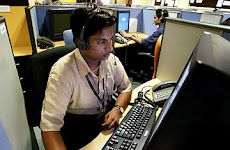
By Aditi Roy Ghatak
When men of mettle clash, sparks fly. That was possibly how the race to win the information technology race in India took off; courtesy the Bhabha and Mahalanobis clash at a time Calcutta was still the centre for scientific excellence – the computing industry included. What began under the visionary Prasanta Chandra Mahalanobis as IT’s long revolution, only to lose its way in Calcutta, even as it travelled through Bombay acquiring muscle in Bangalore and Hyderabad is quite a fascinating tale. The origins may be irrelevant in an India where leading multinationals have sited their R&D operations. Nevertheless, the Mahalanobis story – getting India’s first automatic calculators and unit record machines for the Indian Statistical Institute; following it up by a facility to develop and fabricate computing machines locally; driving the non-profit Indian Calculating Machine and Scientific Instrument Research Society to develop calculators and scientific instruments in September 1943; and the then establishing an ISI unit for repair and maintenance of calculators – deserves to be revisited. Who else but Mahalanobis could inspire Samarendra Kumar Mitra and Soumyendra Mohan Bose, outstanding engineers of the times, to go through the junkyards of Chandni Chowk to dig up war material to build India’s first ‘analogue electronic computer’ in 1953 at the ISI’s Electronic Computer Laboratory, made ready for this specific purpose in 1950? The revolution was on track as Mahalanobis got large mainframes from British Tabulating Machine, Ural from the Soviet Union and another computer from IBM and even later when the ISI and Jadavpur University collaborated to developed a digital computer, ISIJU. By then, though, the revolution was encountering a parallel force. Homi J. Bhabha was charting a brilliant course with the Tata Institute of Fundamental Research that eventually developed the TIFR Automatic Calculator. Also, Bhabha won the battle for the tag of National Computer Centre for his own computer installations, simultaneously taking the lead in spearheading the electronics development policy, especially after the war with China. Bengal took the back seat since then.
Dinesh C. Sharma’s chronicle The Long Revolution: The Birth and Growth of India’s IT Industry undertakes a journalist’s – rather than a scientist’s journey – through the electronics committee which Bhaba headed, paving the way for the Electronics Commission and the Department of Electronics. The Calcutta initiative had clearly been wrested by Bombay and with the Leftists sowing the seeds of suspicion around computers in the heart and souls of the middle-class Bengali, the computer revolution went way off target in this city.

